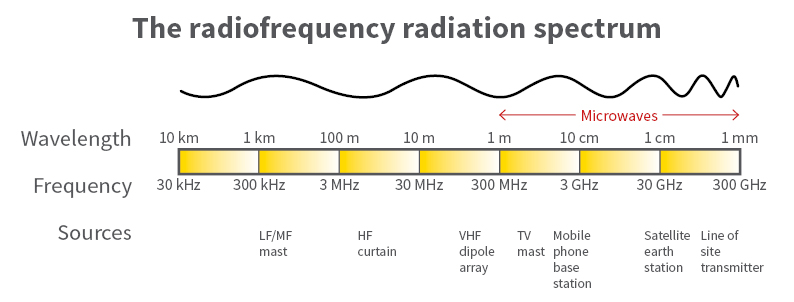RF Exposure In Amateur Radio: All You Need To Know
Waves of magnetic and electric energy radiating through space at the speed of light make up electromagnetic radiation. One form of electromagnetic energy is the emission of microwaves and radio waves by transmitting antennas.
These waves are collectively referred to as “radiofrequency” or “RF” radiation or energy. Often, to indicate the presence of RF energy or electromagnetic energy, terms like “radiofrequency field” or “electromagnetic field” are used.
Exposure to this RF energy or radiation is called RF exposure. We, humans, are inevitably exposed to radiofrequency radiation around us. One of the many man-made sources that have RF exposure is amateur radio.
UNDERSTANDING THE TYPE OF RF RADIATION IN AMATEUR RADIO
Amateur radios, like broadcast AM and FM radio, cordless phones, Wi-Fi, baby monitors, microwaves, sunlight, emit non-ionizing radiation. The damage caused by exposure to this radiation includes the heating of body tissue and skin burns.
Ionizing RF radiation is not emitted through amateur radio. This radiation is much more harmful, resulting in the destruction and mutation of your body’s DNA leading to cancer and other severe issues.
Even though the RF exposure in amateur radio is not very damaging, safe exposure depends on the frequency of waves you are exposed to. The exposure limit at the 50Mhz or 6-meter band is the lowest as the human body is most sensitive to frequencies around that range.
CONTROLLED AND UNCONTROLLED RF EXPOSURE
RF exposure in your amateur radio is measured over a period of time and includes two different time frames: Controlled and uncontrolled.
Times, when you are aware of the existence of RF energy and can work towards reducing your exposure, are known as controlled RF exposure. Operating your own amateur radio stations will fall under controlled exposure because you are aware of the range of your emissions and can lower the frequency or power or cancel the operation altogether.
If your amateur radio’s RF radiation extends to your neighbors’ house, then it is known as uncontrolled exposure as your neighbor is unaware of these emissions.
RF EXPOSURE LIMITS
The FCC has stated the RF Exposure limits in amateur radio in OET Bulletin 65. According to Bulletin 65, a routine radiation evaluation will not be required if the transmitter power of the station is in compliance with the table given below.
If the exposure levels exceed those mentioned in the table, a routine RF radiation evaluation will be required.
| Band | Power (W) |
| 160 meters | 500 |
| 80 | 500 |
| 40 | 500 |
| 30 | 425 |
| 20 | 225 |
| 17 | 125 |
| 15 | 100 |
| 12 | 75 |
| 10 | 50 |
| 6 | 50 |
| 2 | 50 |
| 1.25 | 50 |
| 70 cm | 70 |
| 33 cm | 150 |
| 23 cm | 200 |
| 13 cm | 250 |
| SHF (all bands) | 250 |
| EHF (all bands) | 250 |
TO SUM IT UP
Amateur radio is an extremely handy device that can be operated with safe RF radiation. As long as you keep the RF transmission levels in check, your RF exposure won’t be hazardous, and you can use your amateur radio worry-free.

